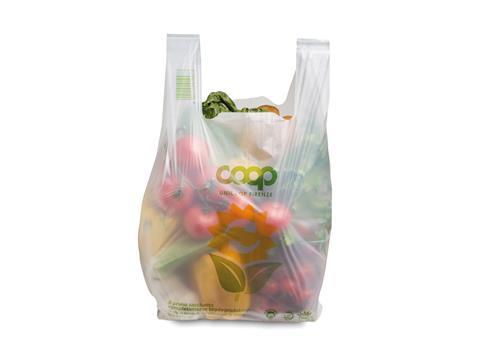
As the world searches for alternatives to traditional packaging materials, what role do bioplastics have to play? We spoke with Hasso von Pogrell, Managing Director of European Bioplastics, to get his perspective on the upsides of bioplastics, potential applications, and the varied challenges that lie ahead.
What is the argument for switching to renewable materials in packaging wherever viable?
To meet the objectives of the EU Green Deal, we need to de-fossilise the planet, and it starts with switching to renewables, in the plastics industry, in the energy sector, wherever possible and applicable.
Biobased, biodegradable, and compostable plastics make significant contributions to a carbon-neutral Europe by acting as and helping create carbon sinks, all the while decreasing Europe’s dependency on finite fossil resources. Compostable plastics made from renewable resources play a crucial role in closing both the material and the carbon loop. At the same time, they help boost soil fertility by returning the biowaste’s nutrients in the form of high-value compost.
What are the main types of bioplastics that have the potential to deliver better environmental impacts in the packaging sector?
All biobased plastics play an essential role in reaching climate neutrality by capturing CO2 from the atmosphere and reducing the dependence on fossil-based feedstocks. Therefore, whenever additional virgin materials are needed, they should be biobased. As the different types of biobased polymers offer different properties and application scopes, their employment depends on the sought-for functionality of the respective application. Technically speaking, there exists a biobased alternative to each and every fossil-based application.
All biodegradable polymers and compounds that are converted into compostable packaging applications provide added value through organic recycling (i.e., industrial composting and anaerobic digestion) as an additional waste treatment option. Industrially compostable plastics certified according to the harmonised European standard EN 13432 for the organic recovery of packaging contribute to efficient waste management and circular preservation of resources.
…and in which applications do you see the biggest opportunities?
With an adequate legislative framework in place, a gradual switch from fossil-based to biobased and/or compostable packaging applications will be possible. For especially rigid packaging applications, biobased/non-compostable packaging that can be mechanically and /or chemically recycled is the environmentally friendlier solution; for packaging that is liable to be contaminated with food waste after use, e.g., coffee capsules/tea bags, fruit and vegetable bags, light-weight carrier bags, thin film applications for fruit & vegetable packaging, fruit labels, etc., compostable applications should be the preferred alternative.
Are there areas where you believe fossil-based plastics still have a significant role to play?
While technically every fossil-based virgin plastic could be replaced by a bioplastic counterpart, the current market share of bioplastics is still far too low to fully replace fossil-based plastics. In an ideal world, we wouldn’t exploit any finite resources to achieve true circularity. But without a favourable legislative context to boost the scale-up of bioplastic products, we will unfortunately still need to rely on fossil-based plastic in our everyday life for a long period of time.
What are the main challenges for the bioplastics industry that you expect to discuss at the forthcoming European Bioplastics Conference: regulatory / investment in production capacity / end-of-life infrastructure?
The PPWR has been keeping everybody busy for more than a year across Europe. This is of course an important issue in the regulatory framework for bioplastics, which we will tackle at EBC. We will also disclose the results of our 2023 data market report, with a new addition this year: the production number for 2023.
This will allow us to compare the capacities to the actual production of bioplastics and draw conclusions. Additionally, we will have some sessions on the importance of certifications for products as well as the environmental impact of bioplastics. Finally, we will discuss the potential of the bioplastics industry in a circular future.
What are the key messages you want to get across to the FMCG value chain at the Sustainable Packaging Summit?
At European Bioplastics, we believe that to contribute to the EU Green Deal goals, all materials and processes will have to transition to circular economy business models and value chains. This will make sure that carbon stays in the cycle and that the priorities of the European waste hierarchy are adhered to, with reduction and reuse at the top and recycling at its heart.
Bioplastics contribute to this transition: biobased plastics capture CO2 from the atmosphere by using biomass and storing the carbon in products that are durable, reusable, and recyclable, thereby keeping the carbon in the cycle without harming ecosystems and emitting further GHGs. As for compostable plastics, they provide additional value by increasing organic recycling and contributing to creating carbon sinks.
If you would like to hear more about these topics from Hasso in person, you can join him at our Sustainable Packaging Summit in Amsterdam on 14-15 November. The Summit brings together leaders and pioneers from across the industry to align strategically, learn, network, and create a critical mass to accelerate change. You can learn more by clicking here, and you can buy a ticket to attend here.
Also, European Bioplastics’ own European Bioplastics Conference, which it describes as Europe’s leading business and discussion forum within the global bioplastics sector, will be taking place on the 12th and the 13th of December 2023 at the Titanic Hotel Berlin, Germany. Register to attend here.











No comments yet